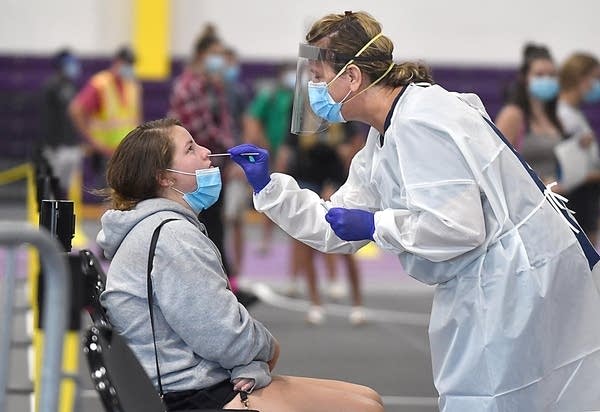Sept. 22 update on COVID-19 in MN: Hospitalizations, ICU cases climb

Emma Vogel has a sample taken for a COVID-19 test Sept. 2 at a mass testing clinic at Minnesota State University, Mankato's Myers Field House in Mankato, Minn.
Pat Christman | Mankato Free Press
Go Deeper.
Create an account or log in to save stories.
Like this?
Thanks for liking this story! We have added it to a list of your favorite stories.


